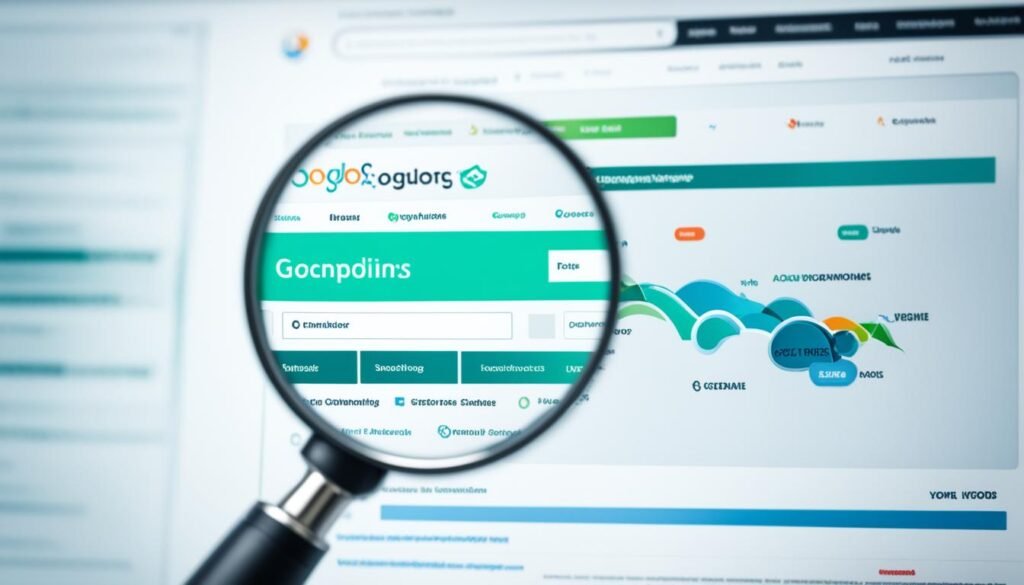Table of Contents
ToggleInternet Commerce: The COVID-19 pandemic changed how people shop, moving many from stores to online. With this shift, the market for online shopping is growing fast. It’s predicted to increase by 11% from 2019 to 2024. This growth means more competition for online sellers, who need to grab their visitors’ attention quickly.
Your website’s homepage is key here. It’s usually the first thing potential customers see. To make visitors stay and shop, the homepage must be enticing. Testing different designs and content, through methods like A/B testing, helps find what works best to reach your audience.
Key Takeaways
- The eCommerce market is expected to grow by 11% between 2019 and 2024 due to the shift to online shopping during the COVID-19 pandemic.
- Businesses need to optimize their homepage to stand out from the competition and capture visitors’ attention within seconds.
- Continuous experimentation, such as A/B testing, can help identify the most effective homepage elements to attract and convert the target audience.
- Effective homepage optimization is crucial for driving website traffic, search engine rankings, conversions, and sales.
- Businesses should focus on creating a visually appealing and user-friendly homepage that clearly communicates their brand, products, and services.
Importance of Optimizing Your Homepage
The eCommerce market is booming, especially since more people shifted to online shopping during the pandemic. Because of this, the competition among online businesses is growing. It’s projected that eCommerce sales will increase by 11% by 2024.
Statistics on eCommerce Growth and Competition
With more consumers shopping online, eCommerce companies are striving to get noticed. ECommerce sales are expected to keep going up. The first quarter of 2023 alone could see a 17.8% increase in total sales from the year before.
Forming First Impressions Within Seconds
The homepage is vital as it’s where visitors get their first impression. Studies reveal that people decide if they like a website in 10 seconds. So, making sure your homepage is well-designed to grab and keep visitors’ interest is crucial for eCommerce companies.
Impacting Marketing Strategy and Sales
An effective homepage boosts several key areas for a business. It improves website traffic, search engine rankings, conversions, and sales. By using methods like A/B testing, eCommerce companies can find the best ways to engage their target audience.
Employ an SEO Homepage Strategy

To make the homepage work well for both internet commerce and e-commerce, focus on what appears “above the fold.” This is the part you see first, before scrolling. It should tell visitors who the company is, what they sell, and how to move around the site and buy. Include branding/logo, contact details, easy navigation, search bar, latest deals, cart, and clear buttons for actions.
Optimizing Above-the-Fold Content
Above-the-fold content on the homepage is crucial for engaging users and leading them to buy. Prioritize the company’s identity, products, and easy ways to navigate and shop. This means showing your logo, contact info, search, deals, and action buttons prominently.
Optimizing Title Tags, Meta Descriptions, and Images
Improving the homepage’s title tags, meta descriptions, and photos is key for better search results and user experience. The title tag needs to quickly say what’s offered, while the meta description should grab users’ attention. Using relevant keywords helps the site rank higher for e-commerce searches.
Also, make images better by adding detailed alt text and making sure they load fast. This boosts the site’s user experience and SEO.
Testing and Measuring SEO Efforts
It’s vital to keep testing and measuring to get the most out of the homepage’s SEO. Always look at website traffic, bounce, conversion rates, and where you rank in searches. This information leads to improvements in content, layout, and how you optimize the site.
Tools like Google Analytics and keyword research give valuable info about your audience’s habits. With regular assessments, businesses can use real data to boost the site’s performance. This ultimately grows earnings from online sales.
Utilize Effective Calls-to-Action (CTAs)

Good calls-to-action (CTAs) help direct website visitors and boost conversions. On an ecommerce homepage, popular CTAs are “Schedule a Demo,” “Begin Free Trial,” “Learn More,” and “Buy Now.” Use strong verbs in these CTAs to prompt action. Also, where and how you place the CTA buttons affects their success a lot.
A/B Testing CTAs
To find the best CTA for your ecommerce homepage, try A/B testing. You can test different button colors, locations, and copy. This shows which combo gets you more conversion rates. Tools such as Hubspot and VWO make it easy to run A/B tests and check your outcomes.
Primary and Secondary CTAs
Besides A/B testing, using both primary and secondary CTAs can be smart for ecommerce businesses. The main CTA, like “Buy Now,” should stand out the most. It encourages the big action you want visitors to take. Secondary CTAs, like “Learn More” or “Schedule a Consultation,” give options for those not yet ready. Placing them right can make the user experience better and drive more conversions.
Prioritize Mobile Experience
More people are using their smartphones and tablets to shop online. For ecommerce brands, making the mobile experience great is key. By 2020, the U.S. expects to make $339.03 billion through mobile retail, up from $207.15 billion in 2018. It’s interesting that 85% of adults think a mobile website should be as good as a desktop one or better.
Importance of Mobile Optimization
Mobile commerce and m-commerce are getting more popular. So, businesses need to make their websites and mobile apps perfect for users on-the-go. Ignoring the need for mobile optimization can make people frustrated and cause them to leave without buying.
Creating a great mobile experience makes customers happier. It also makes them more likely to stick with your brand and tell others about it. This means your business can keep growing.
A/B Testing for Mobile
A/B testing helps improve the mobile experience. Ecommerce sites can test different designs, content, and features to see what works best. This way, they can make sure their mobile site or app is the best it can be.
Display Contact Information
Showing contact information on the homepage builds trust with visitors. It helps create a better user experience. About 44% of visitors might leave if they can’t find contact info or a phone number. It’s important for businesses to offer several contact options. These could include phone numbers, email addresses, and social media links.
Solo Stove puts a big “Contact us” button on their website’s menu. Clicking it opens a message box for visitors to easily reach out. This shows Solo Stove‘s dedication to providing good customer service. It makes the internet commerce and e-commerce experience better for their customers.
| Contact Option | Benefit |
|---|---|
| Phone Number | Allows customers to talk directly to a real person and get help right away. |
| Email Address | Offers an easy way for customers to ask questions and get quick answers. |
| Social Media | Helps businesses connect with customers on platforms they already enjoy. This builds community and responsiveness. |
Showing these contact information options can lead to better customer service. It helps internet commerce and e-commerce businesses show they care. This builds a stronger and more trustworthy bond with their customers.
Provide Personalized Recommendations
In the fast-evolving world of internet commerce and e-commerce, it’s vital to meet customer expectations. Today, customers expect personalized shopping suggestions. These should be based on what they’ve bought before and what they’ve looked at online. This approach helps businesses make their customers happy and sell more.
To be successful, ecommerce shops must use smart tools. These tools can look at what each customer has done before and suggest products they might like. This way, customers see things they are already interested in. They also find new products that fit with their taste and shopping patterns.
| Key Benefits of Personalized Product Recommendations | Percentage Increase in Metrics |
|---|---|
| Improved Customer Experience | 30% |
| Higher Conversion Rates | 40% |
| Increased Average Order Value | 35% |
| Enhanced Customer Loyalty | 25% |
Using personalization is a game-changer for ecommerce companies. It allows them to give each customer a shopping experience that’s just right for them. As a result, they can grow and succeed in the crowded world of internet commerce.
Internet Commerce Optimization Strategies
Ecommerce stores can boost their online impact beyond just the homepage. They should focus on better website navigation, enhance products pages, make listings more attractive, start a blog, and allow for customer reviews. These steps help in gaining more customers and increasing sales.
Easy-to-Follow Navigation
Having a navigation that’s easy to use is key for online shops. It should include breadcrumbs, easy-to-see categories, and a good search bar. Such a setup doesn’t just help shoppers find things. It also boosts how well the site does on search engines.
Optimizing Product Pages with Keywords
Each product page should use the right keywords. Making sure the page titles, product details, and photos match what users search for can help the site show up more on search results. This brings in more people interested in buying.
Creating Enticing Product Listings
The product listings themselves need to draw people in. Short but effective product descriptions are a must. Adding the best features and showing off the product with great photos can really make a product stand out, getting more clicks.
Going Beyond Product Pages with a Blog
Adding a blog is a smart way to attract people. It lets an ecommerce site share useful and interesting info plus tips, which can draw in more visitors. It also helps show the shop is knowledgeable and trustworthy.
Allowing Product Reviews
Product reviews are vital, as they show what other buyers think. Letting people leave reviews builds trust and can persuade others to buy the product. Making the review feature easy to find and use is important for this to work well.
Evaluate Website Performance

In the world of online selling, how well a website works is key. Roughly 70% of shoppers think about speed before they buy. And most expect a page to load in 3 seconds or less.
Importance of Website Speed
Slow sites annoy users and hurt business. They lower sales, loyalty, and trust. For every second a page is slow, up to 7% of visitors may not buy. A 3-second wait could make half of them leave. On the flip side, a fast site can gain more visitors, pleased by their experience.
Website Performance Metrics
For online shops, measuring performance is vital. Looking at page load time, bounce rate, conversion rate, and customer loyalty is crucial. Google’s Core Web Vitals also help by focusing on user experience.
They include metrics like Largest Contentful Paint, Interaction to Next Paint, First Input Delay, and Cumulative Layout Shift. These give deep insights into how users feel on a site.
Measuring Website Performance
Google PageSpeed Insights is a great tool for checking site performance. It looks at things like Time to First Byte, Total Blocking Time, and First Contentful Paint. These insights can help businesses make their sites faster and more user-friendly.
Improve Website Performance
For better user experiences and more sales, online stores should focus on making their sites faster. They can do this by pay close attention to several aspects of website performance. These factors include things like HTTP requests, enabling HTTP/2, working on redirects, managing third-party scripts, and using asynchronous loading.
This helps e-commerce sites load quicker and get users more engaged. So, customer satisfaction and sales can go up.
Reducing HTTP Requests
Cutting down on how many HTTP requests a site makes is a big deal. Every time your browser opens a new page or grabs content, it asks the server for it. This can slow things down a lot.
To speed your site up, it’s good to use tools like Screaming Frog SEO Spider and Ahrefs SEO Toolbar. They can spot and fix any extra requests your site makes. This can make your site load faster. As a result, your users get a better experience and may buy more.
Enabling HTTP/2
Getting on HTTP/2, the newest version of the HTTP protocol, can really help. HTTP/2 offers features like multiplexing and better ways to send data. This means your pages can load quicker and use less data, making for happier customers.
It’s a great way to make your e-commerce site perform better for everyone surfing the web.
Auditing Redirects
Too many redirects can slow your site down. They make your server do extra work and create more HTTP requests. This is not good for user experience.
It’s smart to keep an eye on your site’s redirects and get rid of any that aren’t needed. A tool like KeyCDN can make this easier. This boosts your site’s speed, making shoppers happier.
Minimizing Third-Party Scripts
Adding third-party scripts like analytics and ads can make your site slower. It’s important to use only the scripts you really need. This keeps your site running fast and smooth.
So, choosing your scripts wisely and reducing their numbers is a good move for your site.
Loading Scripts Asynchronously
It’s also wise to load scripts asynchronously. This lets the rest of the page show up without waiting for the scripts to be fully downloaded. It makes your site feel faster, which is great for everyone.
Your site seems more responsive, making your users very pleased.
Also Read: Social Commerce Success: Harnessing The Power Of Social Media E-commerce
Mobile-First Thinking
Since more people are shopping on mobile devices, your site should put mobile first. This means making sure it works great and loads fast on phones and tablets. Tools like Google PageSpeed Insights are there to help you do just that.
Having a site that looks and works amazing on mobile is key for boosting your sales online.
| Optimization Technique | Impact on Website Performance |
|---|---|
| Reducing HTTP Requests | Significantly enhances page load times and user experience, leading to improved conversion rates. |
| Enabling HTTP/2 | Provides performance enhancements like multiplexing, header compression, and server push, resulting in faster page loads and reduced bandwidth usage. |
| Auditing Redirects | Eliminates unnecessary redirects, reducing round-trip times and the overall number of HTTP requests, thereby improving website speed. |
| Minimizing Third-Party Scripts | Reduces the impact of third-party scripts on page load times, enhancing the overall user experience and website performance. |
| Loading Scripts Asynchronously | Allows the page to render without being blocked by script downloads, improving perceived website performance and user experience. |
| Mobile-First Thinking | Ensures the website delivers a fast, responsive experience on mobile devices, which is crucial for driving conversions in the growing mobile commerce landscape. |
Conclusion
Optimizing an ecommerce website is a never-ending task. It involves focusing on areas like homepage design, SEO, effective calls-to-action, mobile experience, and website performance. By using strategies to enhance these, companies can make a better user experience, increase conversions, and get noticed more on search engine rankings.
It’s vital to keep testing and measuring to find the best tweaks for your audience. A well-tuned website can help you stand out and grow in the booming world of internet commerce and e-commerce.
Placing importance on the homepage, nailing your SEO, using CTAs to direct visitors, having a spotless mobile experience, and offering personalized recommendations are key. Additionally, maintaining the best website performance possible. This way, online shops can flourish in the ever-changing market.
FAQs
Q: What is electronic commerce?
A: Electronic commerce, or e-commerce, refers to the buying and selling of goods and services over the internet.
Q: What are the advantages of e-commerce?
A: Some advantages of e-commerce include a wider reach for businesses, decreased costs for consumers, convenience in shopping, and 24/7 availability.
Q: What are the disadvantages of e-commerce?
A: Disadvantages of e-commerce can include security concerns, lack of personal interaction, shipping costs, and the need for internet access.
Q: What is an e-commerce platform?
A: An e-commerce platform is a software application that helps businesses manage their online sales operations, including accepting payments and managing inventory.
Q: What is the difference between e-commerce and e-business?
A: E-commerce specifically refers to online buying and selling of goods and services, while e-business encompasses a wider range of online business activities including marketing, customer service, and more.
Q: How can I optimize my e-commerce website?
A: You can optimize your e-commerce website by focusing on user experience, mobile responsiveness, fast loading times, search engine optimization, and secure payment options.
Q: What are some common types of e-commerce?
A: Some common types of e-commerce include business-to-consumer (B2C), business-to-business (B2B), consumer-to-consumer (C2C), and consumer-to-business (C2B) transactions.




